Once you decide that you want to develop a community for your customers, what’s the next step? You can start by answering these questions:
1. What do my customers want from an online community?
Their overarching goal will be to maximize the value of the technology or software that they’ve purchased from you. The specific aspects that your community will offer – peer-to-peer interaction, the ability to ask questions of peers and other experts, a library of best practices, a steady stream of tips and tricks, or even a self-service support center – will depend on your goals and resources.
2. What does my organization want to achieve by developing an online community?
Perhaps you want to retain more customers, reduce the costs of managing the support function, or differentiate your offering. See where there is overlap between what your customers want, and your goals (and budget). Then you can choose the scope and structure for your community that offers the most value on both sides.
3. What resources (budget, time, long-term commitment) can my organization assign to this project?
Whether your budget is large or small, there is a community option to match. The least-expensive option is to create your community on a “free” social media platform such as Facebook, Twitter, LinkedIn, etc. You don’t pay for the platform, only for your involvement in terms of creating content, managing membership and moderating discussions, etc.
But you don’t make the rules, or even “own” your community. If that platform changes how it operates, or if it disappears – so does your community. An owned community, on the other hand, is yours forever. It is more expensive, but it’s branded in line with your products and organization, and you can do whatever you like with it.
Here are some of the pros and cons for free vs. owned:
|
“free” online community (Facebook, Twitter, LinkedIn, etc.) |
“owned” online community |
|
It’s easier to promote to potential members, since you can find them within the platform |
It’s more difficult to get people to join, you have to first introduce them to the community, and encourage them to join |
|
You have to follow the rules and procedures for communicating with members |
You can communicate with members however you like |
|
The main “brand” is the platform, your brand is secondary |
Your company and brand is dominant |
|
It’s easy to manage and moderate a community on a free platform |
It can be costly to develop and maintain an owned community |
Source: HubSpot
The type of platform that is best for you will depend on your goals, your customers’ online preferences, and your resources. If your customers are very active on Facebook, for example, it might make sense to house your community there. It’s a low-budget way to launch a community; all you need is a community manager and some content to get started. On the other hand, if you have the resources, and you know your customers would benefit from a multi-faceted community, an owned community may be the best option, and provide you with more ROI and benefits.
Community managers and moderators
Whether you use a free or owned platform, your community will need to be managed. You’ll need a community manager, and moderators for the various discussions/forums you are hosting. Your managers/moderators will need to be trained in the right way to manage complaints, defuse debates, refer issues, and respond in a timely manner. This includes any product experts who are responsible for moderating specific discussions; they might have the product expertise, but they should also be coached on how to handle online discussions.
Integrate with support and sales
Bring your colleagues from IT, support and sales into the planning process early. If you have an owned community, you’ll need to integrate the technology that powers your community with support and sales. Otherwise, you’ll end up with data silos, and a clunky process to pass data to the right person or department. And the more tightly your community is integrated, the easier it will be to track the activity in your community as it relates to sales, i.e. you’ll be able to see if a certain post or discussion creates a sales uptick, or if a webinar generates leads. If your community is a Facebook group, you’ll still need a process to identify and refer potential leads, and quickly route any support or product issues.
These are just some of the things to consider in developing an online community. At Living Stone, we’ve created all types of online communities for our customers, ranging from large owned versions, to niche Facebook groups focused on a specific interest and group of customers. If you’d like to learn more about starting an online community for your organization, we’d be glad to talk with you.
Contact us at info@livingstone.eu to get started.



